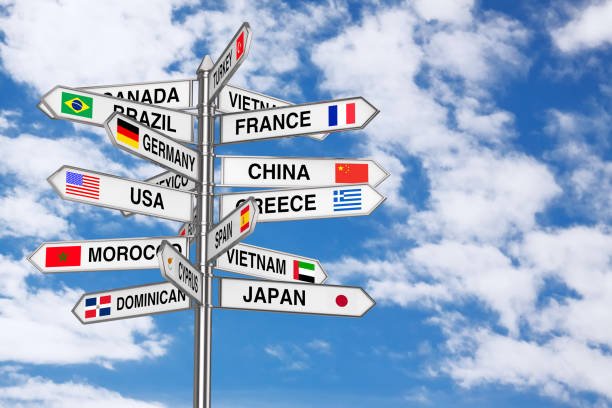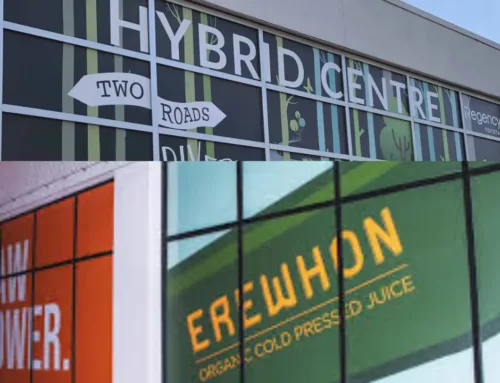We were attending a significant event, whether conferences, music, a festival, a sport competition, or a trade show and one of the most frustrating experiences for attendees was getting lost or nort working were to go it. It is were directional signage plays a important role. Directional signs guide people, reduce confusion, and enhance the overall experience of any event.
In this blog, we will discuss directional signage is vital for significant events and how it helps create an organized, smooth and enjoyable for everyone involved.
What is directional signage?
Directional signage refers to signs placed strategically to direct attendees or visitors to specific areas or services. It usually includes arrows, text, and sometimes images that clarify where to go. At significant events, such signage is often use to include:
- Entry and exit points
- Restrooms
- Food stalls and concession areas
- Registration and information booths
- Specific stages or rooms where activities are held
- Parking areas
Effective directional signage is easily read, clearly visible, and designed to be understood at a glance.
Why Directional Signage are Important to large Events?
Some top strategy are available to explain why directional signage are important to large events:
1. Guide Attendees Efficiently
Imagine attending a concert with thousands of people in a large conference spread over multiple rooms. With proper directional signs, it can be easier for attendees to know exactly where to go, which save time and avoids frustration.
For example, directional signs can guide visitors to specific exhibitor boots at the show. Sgns can direct people to their assigned seating sections at a sporting events. This guidance helps prevent confusion and make the events experience more enjoyable.
2. Reduce Stress and Confusion
Significant events can sometimes be overwhelming due to the sheer size of the venue and the number of people present. Attendees become stressed and anxious When they can’t find what they’re looking for. Good signage helps reduce this stress by providing clear, easy-to-follow instructions.
When directional signs are placed at critical points, such as entrances, intersections, and near facilities like restrooms or exits, they provide a sense of direction. It gives attendees peace of mind knowing they can easily find their way around without constantly asking for help or searching for event staff.
At Signimpact, sign company provides many services to evaluate your business. It also provide storefront signs for business services. It make directional signage for large envents in any place.
3. Ensure Smooth Traffic Flow
A significant challenge for event organizers is ensuring smooth foot traffic. Attendees might crowd certain areas without clear guidance, leading to bottlenecks and safety concerns. Directional signage helps distribute attendees more evenly by pointing them toward different exits, restrooms, or other vital locations.
For instance, well-placed signs near entrances can direct people to different gates or seating areas, preventing crowding in a single location. It improves the flow of people throughout the event and reduces the chances of congestion, especially during peak times.
4. Enhances the Event Experience
Beyond practical purposes, directional signage can also enhance the event’s overall experience. Imagine attending a conference and being greeted by sleek, well-designed signs that provide directions and match the event’s theme or branding. It adds a professional and polished touch to the event, making attendees feel part of something well-organized.
Furthermore, clear signage can help attendees explore different areas of the event they might have missed. For example, at a festival, signs could point attendees toward hidden food trucks, merchandise stands, or entertainment spots, adding to the richness of the experience.
How to Design Effective Directional Signage for Large Events
Designing good directional signage for significant events involves more than just placing arrows on boards. Here are a few key considerations:
1. Clarity and Simplicity
The most crucial aspect of directional sign is clarity. The signs should be easily read from a distance and use simple language. Avoid using too much text. Arrows, symbols, and short labels like “Entrance,” “Exit,” or “Restrooms” work best. Also, ensure the font is large enough to be seen from afar.
2. Colour and Contrast
Make sure that the text and background of the sign contrast well so that the information is easily visible. For instance, white text on a dark background or black text on a light background is easy to read. Bright, bold colours can also help catch attention, especially in busy or crowded environments.
3. Strategic Placement
Even the best-designed signs are only valid if placed in suitable locations. Signs should be positioned at critical points in the venue where attendees are likely to need direction, such as near entrances, exits, intersections, restrooms, or escalators. Additionally, signs should be placed at eye level or even slightly above so they are easy to spot in a crowd.
4. Consistency
Consistency in design is essential. All the signs at the event should have the same design style, colours, and font to be easily recognizable. This way, attendees can quickly spot and follow the signs without second-guessing whether they belong to the event.
5. Use of Technology
At modern events, digital signage can be a game-changer. LED screens or digital boards can display directions and other relevant information and be easily changeable in real-time. For example, if a room or area changes, the signs can be updated instantly without physical changes.
Read Also: How Signage Influences Workplace Productivity and Aesthetics
The Role of Signage in Emergency Situations
Directional sign are important in emergencies beyond guiding people during normal event activities. Clear exit signs and emergency routes can save lives in an emergency, such as a fire or medical situation. Attendees need to quickly understand where the nearest exits are and how to leave the venue safely.
Emergency exit signs should be placed in prominent locations and be easy to spot from all venue areas. They should also be well-lit or glow-in-the-dark to remain visible in low-light conditions or power outages.
Conclusion
In summary, directional sign plays a vital role in ensuring the success of any significant event. From guiding attendees efficiently to reducing stress and improving traffic flow, these signs help create a smoother and more enjoyable experience for everyone involved. Additionally, well-designed signage contributes to the event’s overall aesthetic, enhancing its professionalism and appeal.
Don’t consider the importance of good directional sign when planning your next significant event. It’s a simple yet powerful tool that can make all the difference in the success of your event and the satisfaction of your attendees.





